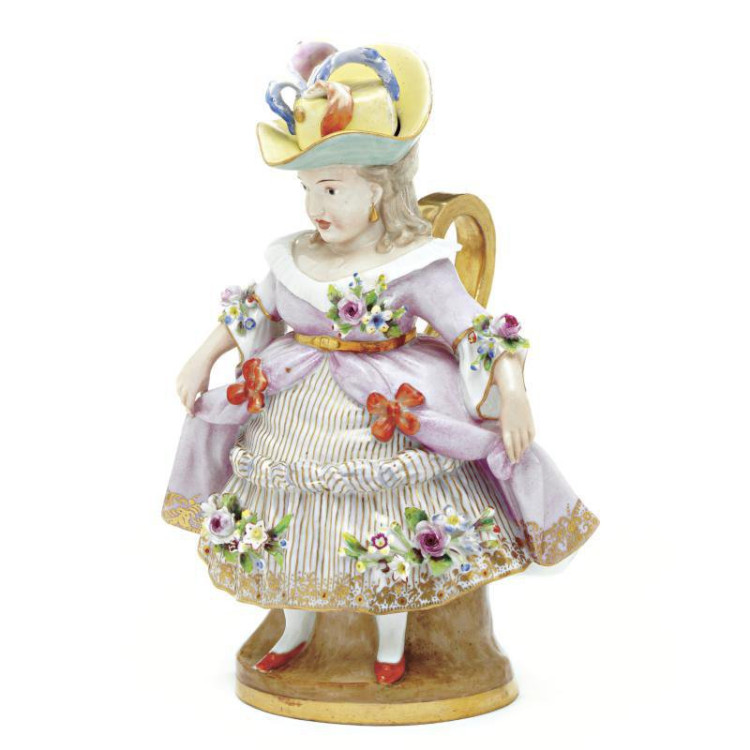This drinking vessel takes the shape of a woman, and it is a rare example of the Imperial Porcelain Factory adapting traditional English Toby jugs, beer mugs shaped like human figures or the head of a characteristic person. The first English portrait and figure jugs were made in 1760 from faience by potters in Staffordshire, a major center for ceramics. The origin of their name is linked to various legends, from Sir Toby Belch in Shakespeare’s Twelfth Night to the notorious drunkard Toby Fillpot, mentioned in an English drinking song. The subjects of Toby jugs were originally taken from English commoners: picturesque sailors and esquires, pipe-smokers, warders, merchants and pastors. The first female Toby character, who bears a resemblance to the one on display in the Fabergé Museum, appeared in the United Kingdom in the late 18th century as a result of the enormous popularity of a lady by the name of Martha Gunn. She was the first “dipper” in Brighton, operating a bathing machine used by members of Puritan society that allowed them to enter and exit the water in four-wheeled carriages. Martha Gunn was also famous for her friendship with the Prince of Wales, who would go on to become King George IV. In the newspapers of the day, Martha was called “The Venerable Priestess of the Bath.” Despite their nearly 50-year difference in age, the close contact between a common woman and a future king gave rise to all sorts of gossip, and images of Gunn became wildly popular in cartoons and on Toby jugs. She was usually depicted wearing a hat with feathers and a flowery dress with a low neckline, often holding a mug or jug. The charming lady in the Fabergé Museum collection is much more elegant than her prototype and is reminiscent of a fête galante shepherd or gardener, but the handle attached to the figure’s back, frivolously lifting her porcelain skirt, certainly harkens back to the famous Englishwoman.
Throughout its history, the Imperial Porcelain Factory put out thousands of human figures, but this Toby jug is an extremely rare specimen. A similar version of this item is kept in the Hermitage Museum.
